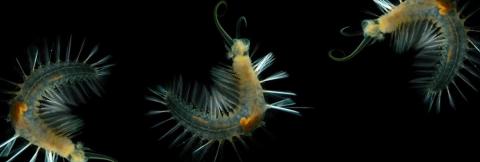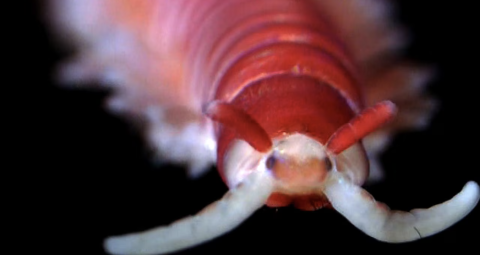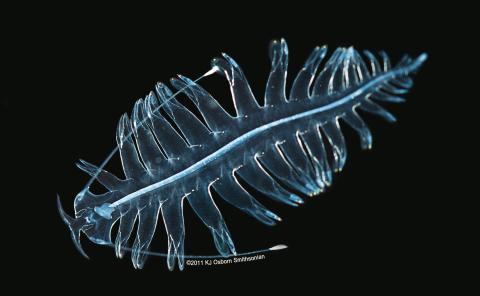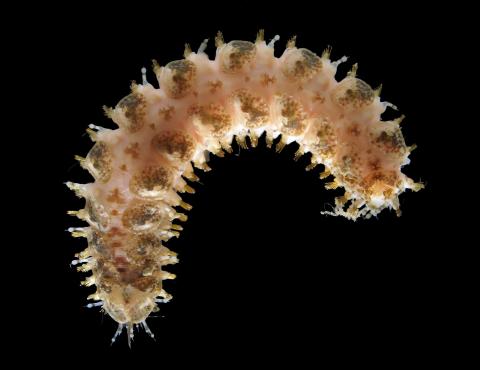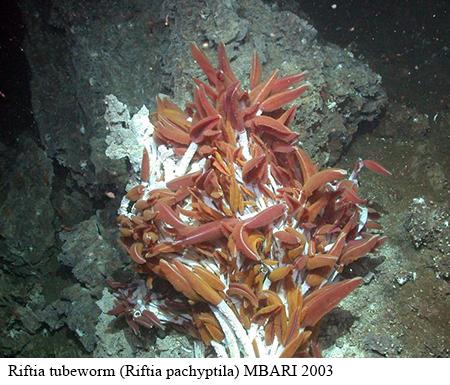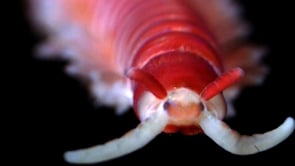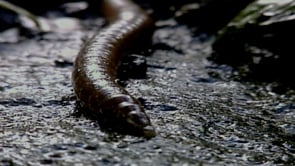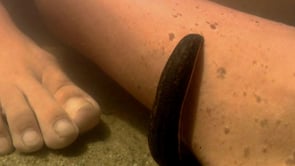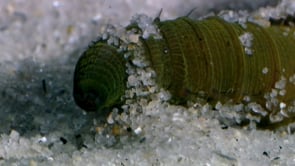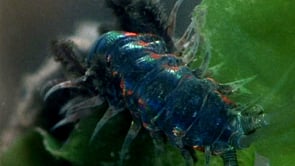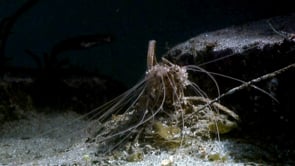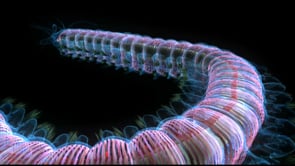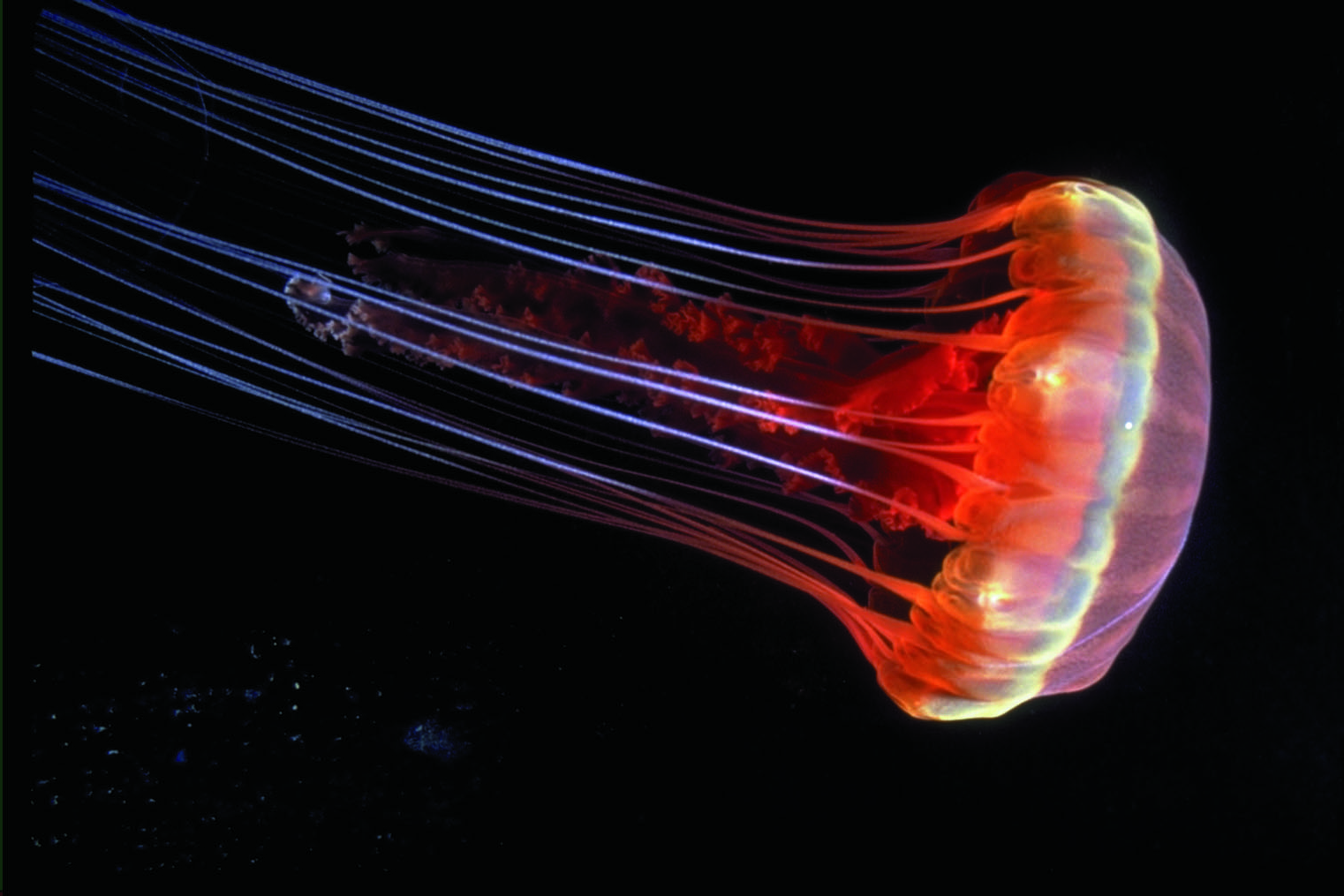

Phyla
Annelids
Associated Shape of Life Content
Annelids: Powerful and Capable Worms
A list of questions with an emphasis on adaptations to use after viewing the video Annelids: Powerful and Capable Worms
Annelids: Fundamental To Deep-Sea Ecosystems
Annelid worms have been essential to many of earth’s ecosystems since the Cambrian Explosion over 500 million years ago.
Annelid Adaptions + Art
This lesson begins with students engaging in the practice of science -- observing the phenomena, describing their observations, and making sense of what they see. They observe annelid behaviors using a Shape of Life video with the audio turned off. They try to figure out what the phenomenon (the behavior) is, how it might help the organism survive, and how it might impact the environment. Working with a partner, they make hypotheses about what they are observing and organisms' adaptions that allow it to perform the behavior.
ANNELID ADAPTIONS + ART

Clam Worm
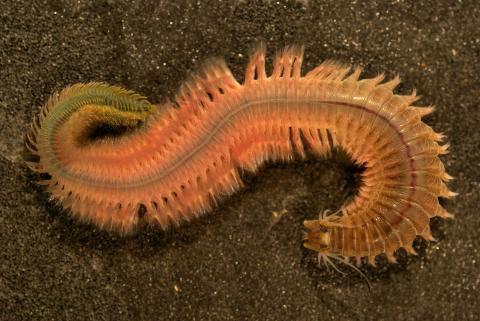
Annelids: Powerful and Capable Worms Questions
There are three separate lessons here based on questions.
- A list of questions about the characteristics of annelids to use after viewing the video Annelids: Powerful and Capable Worms.
- A Shape of Life: Annelids worksheet. Students make sketches and write short answers to questions about the amazing world of annelids. This was created by Rachel Miller from Science From Scratch.
- A Powerpoint with question to use while watching the video Annelids: Powerful and Capable Worms.
Annelids: The Next Segment, an Explosion of Life
What i like doing the most is actually getting out, getting down, getting dirty in the mud with the worms themselves. Getting out there whether it's pouring rain, whether it's a low tide at dawn, I don't care. I just like to be out there with the worms, seeing them in their own habitat.
Annelids: Not Lowly, Lovely
Annelids are impressively adapted animals that live in every habitable niche on earth except the sky.
Annelids and Paleontology
Annelid fossils include tracks and burrows, jaws, and whole bodies. They were already diverse in the Cambrian fossils of the Burgess Shale. One of them called Canadia is much like a modern polychaete worm with a fairly complex brain.
Annelids and Human Interaction
Earthworms are generally good for gardens and agriculture because they “turn” the soil, let more air and water flow through the soil and leave behind organic matter. More at University of Illinois Extension: Can't Live Without Me.
Annelids and Climate Change
Serpulids live in calcium carbonate tubes that often create reefs that are important habitat for other animals. Since their reefs are vulnerable to ocean acidification, there could be profound impacts from climate change.
Earthworms are sensitive to heat and moisture and will probably be adversely affect by global warming.
Annelid's Role in the Ecosystem
Annelids have adapted to almost every possible ecological niche from active predator to sedentary filter feeder. They are active burrowers, they swim in pelagic waters, they live at deep sea hot vents. They are members of every trophic level and are important in their ecosystems.
General Information about Annelids
Read THE NEXT SEGMENT An Explosion of Life from the shape of life book.
General information about annelids can be found at the Animal Diversity website.
Our Oceans: The Frontier for Curious Minds
By Nancy Burnett, Founder, Shape of Life
I just went to a wonderful workshop about plankton. We may as well fess up to the fact that there’s a whole world out there in the ocean that we haven't told you about, yet. Most marine animals that we know and love started out in life looking very different from what they look like as adults.
At the beginning of life, they hatch out of eggs that float in the water or are attached to the bottom of the ocean. The tiny larvae feed, grow and change form in the ocean as part of the zooplankton. These fragile, otherworldly creatures swim or drift in the currents for months at a time before settling to the bottom to change into adults.
Earthworms
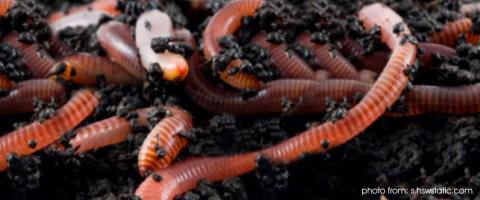
Green Bomber Worm
